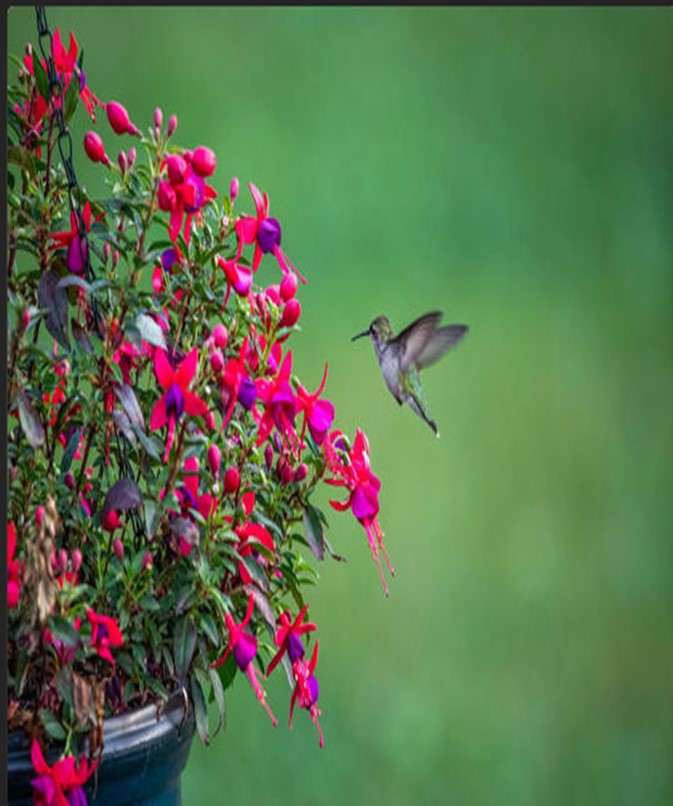How to Grow Fuchsia Plants
That’ll Thrive in a Shady Garden
By Coyalita Linville
How to Grow Fuchsia Plants – With their fountain-like shape and exotic-looking flowers, fuchsia plants make an exquisite addition to any shady garden.
With thousands of cultivars, you’ll find fuchsia in striking shades of hot pink, purple, red, and plenty of bi-color varieties. They’re an especially stunning addition to hanging baskets and containers.
The tubular blooms also are a favorite of pollinators, especially hummingbirds and bees.
Native to Central and South America, these flowers have either upright or trailing growth habits. Most types are grown as annuals, but some are perennial in mild climates, typically USDA Hardiness Zones 9 and warmer (find yours here).
However, some types, such as Fuchsia Magel Lanica or hardy fuchsia and its hybrids, will survive in zones 6 and warmer, though you should add a two to three-inch layer of mulch to protect the plant’s roots.
In cold climates, the plant will die back to the ground in winter and return next spring. Fuchsias flower continuously from spring to fall, though they don’t love super-hot conditions. As a result, their flowering may slow a little in the heat.
The plants are also fragile—be careful when handling them so you don’t accidentally break any of the arching branches.
How to Care for Fuchsia Plant fuchsias when all danger of frost has passed. They do well in both containers and in-ground garden beds. Fuchsias are beautiful when planted alone or in a mixed container with other shade lovers such as ferns and bleeding hearts.
Light Fuchsias generally need part-shade conditions, which is a few hours of direct sunlight per day. They will tolerate morning sun, but many types will not do well in blazing-hot full sun. In cool climates, the hardy types can tolerate more sun. Give them afternoon shade in warm climates.
Soil Fuchsias need fertile, moist, well-draining soil. In containers, use an all-purpose potting mix.
Water Keep fuchsia slightly moist. Water whenever the top of the soil feels dry to the touch, but don’t keep the soil soaked. The hotter it is, the more frequently your fuchsia will need to be watered.
You’ll want to check your pots and hanging baskets daily in the hottest part of summer. Also, make sure that your containers have drainage holes for excess water to drain out.
Temperature and Humidity Fuchsias do best in mild climates with cool summers and high humidity, such as New England, coastal areas, and the Northwest. They do not thrive in hot, dry climates.
Fertilizer Fertilize every two weeks to keep the flowers coming throughout the season. Any balanced, liquid, water-soluble fertilizer or a slow-release granular type is fine.
DOWNLOAD NOW
How to Grow Fuchsia Plants

 Our 100% Money Back Guarantee:
Our 100% Money Back Guarantee:
If for any reason you decided within 30 days that “How to Grow Fuchsia Plants“ isn’t for you, simply notify us by email and we’ll gladly refund your money – no questions asked. That’s our Ironclad Guarantee! The risk is entirely ours! You absolutely have nothing to lose!
Your Name and Email will Never Be Shared or Given to Anyone.
We keep our subscriber’s privacy sacred. We do not sell or rent your personal information to other parties. What’s more you can always unsubscribe at any time!
Warmest Regards,
Coyalita Linville
Copyright © 2023 – 2024 Sunrise-Sunset-Nature-Gardens.com. All Rights Reserved Privacy Policy – Earning Disclaimer – Terms of Use – Contact Us
Open modal
